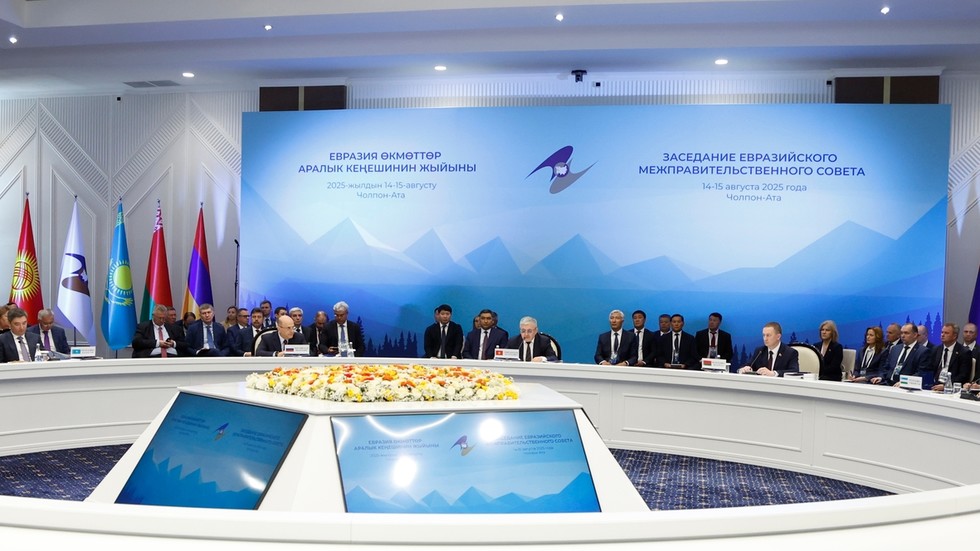The Eurasian Economic Union and Tehran have expanded economic ties since signing a free trade deal in May, Mohammad Atabak has said
The Eurasian Economic Union (EAEU) is helping shape a multipolar world and counter Western hegemonic tendencies, Iranian Minister of Industry, Mines and Trade Mohammad Atabak has stated. He hailed the ongoing expansion in commerce between Tehran and the EAEU member states since a free-trade agreement was signed in May.
Founded in 2014, the trade bloc is comprised of Russia, Belarus, Armenia, Kazakhstan, and Kyrgyzstan.
Speaking during a press briefing in Moscow on Wednesday, Atabak said that the “world no longer tolerates the West’s unilateral course.”
“The time has come for the strengthening of various regional international organizations,” such as BRICS and the Shanghai Cooperation Organization, the Iranian minister stated, emphasizing the importance of these groups in countering Western hegemony.
He expressed optimism regarding further cooperation between Tehran and the EAEU, describing the results achieved over the past several months as promising.
The bloc’s trade minister, Andrey Slepnev concurred with Atabak’s assessment, saying that he expected that “in the medium term, our trade will be double the volume recorded in 2024,” reaching the initial goal of $12 billion in turnover.
He stated that the main emphasis in the three-year-long EAEU-Iran roadmap is on synchronizing infrastructure projects to facilitate bilateral trade, and potentially provide access to the Indian Ocean via Iranian ports.
Commenting on the development of the International North-South Transport Corridor (INSTC), the EAEU trade minister clarified that the “Union is actively moving toward building regional economic partnerships” with such key players as India and Pakistan. In this context, Iran is the “golden link” of the whole project, Slepnev concluded.
The INSTC is being developed jointly by India, Iran, and Russia as an alternative shipping route to the Suez Canal. It links India’s Mumbai port to Iran’s Bandar Abbas, Bandar-e-Anzali, and Chabahar, before crossing the Caspian Sea to reach Astrakhan in southern Russia. The route then connects to Moscow and St. Petersburg via rail and road link.
You can share this story on social media:
Read the full article here


